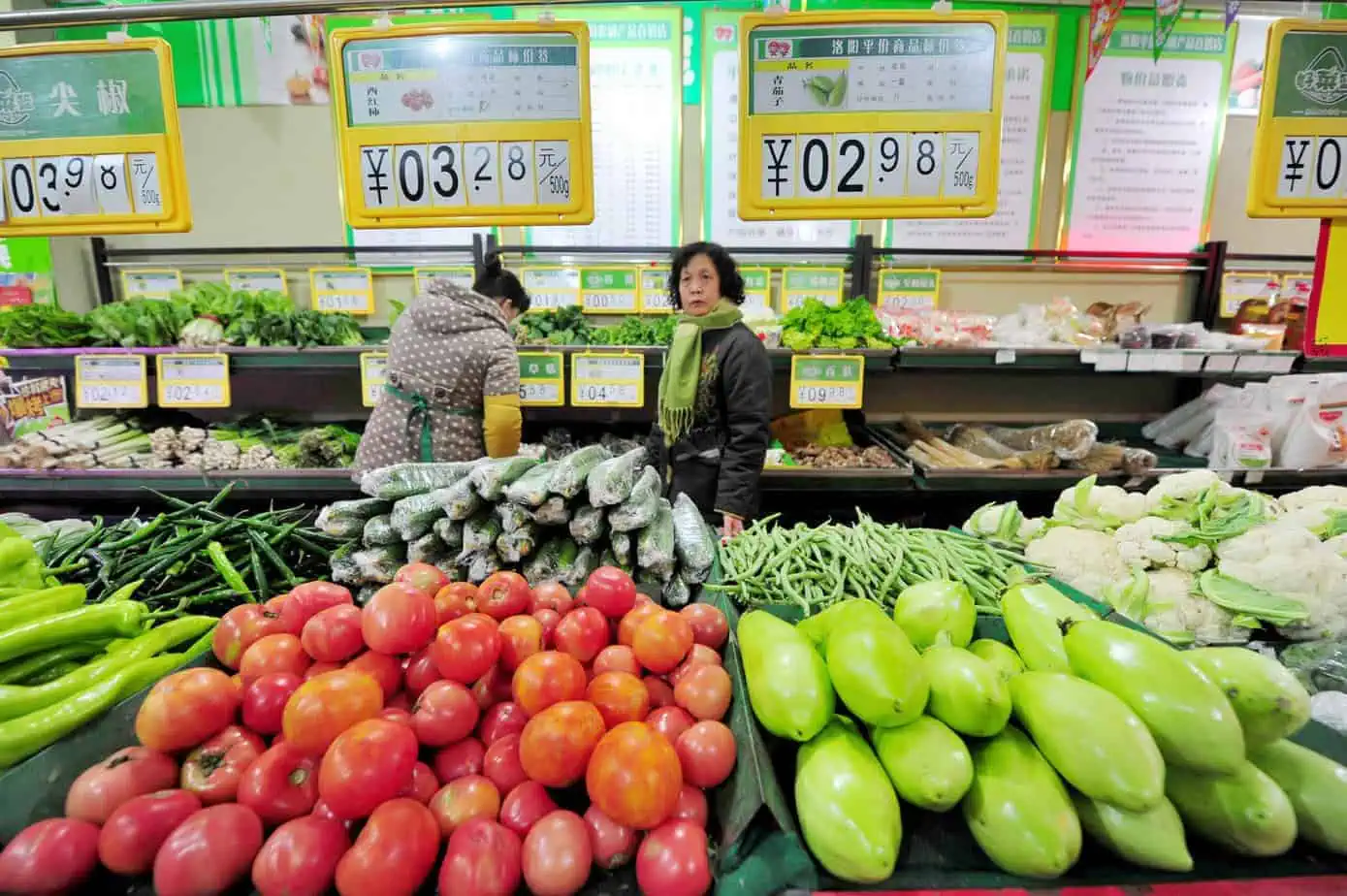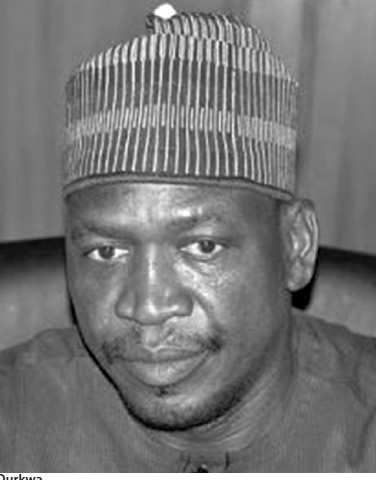Foreign
Rise of ‘non-standard retail’ sparks new consumer vitalityin China

By Li Jie
At Langyuan Station, a creative commercial compound nestled just outside Beijing’s East fifth ring road, visitors wander past red-brick warehouses, rusted railway tracks, and lush greenery, browsing a curated selection of lifestyle brands. The open-air site – a blend of nostalgia and innovation – offers a refreshingly different kind of consumer experience.
Once a textile warehouse complex with over 40 years of history, Langyuan Station underwent a sweeping urban renewal project in 2019. Today, it thrives as a vibrant hub for cultural and commercial activity, featuring film and TV studios, boutique cafes, bookstores, art galleries, designer furniture showrooms, niche retail stores, and live music bars.
Such destinations reflect a growing appetite among Chinese consumers for what has come to be known as “non-standard commercial projects”- a term gaining popularity in China’s evolving retail landscape.
These non-standard commercial projects stand in contrast to traditional shopping malls and department stores. Rather than conforming to conventional formats, they emphasize individuality, differentiation, and immersive experience. According to anindustry report, such projects typically distinguish themselves through innovative spatial design, creative experiences, diversified business mixes, and alternative operational models.
In recent years, the number of these projects has expanded rapidly, particularly in China’s first- and second-tier cities. Some focus on repurposing historical sites, such as Shanghai’s Hongshoufang area, where restored heritage buildings now serve as lively intersections of community life and contemporary culture. Others, such as THE BOX Chaowai, target younger, lifestyle-oriented urban consumers.
Generally more compact – often under 50,000 square meters – and highly flexible in layout, many non-standard projects incorporate open-air designs with green spaces and leisure zones. These are not simply places to shop, but also to gather, explore, and engage.
Inside Ziinlife, a designer furniture store at Langyuan Station, a soaring nine-meter-tall space has been transformed into a two-floor structure. Customers ascend wooden stairs to discover a curated experience of modern home aesthetics.
“This type of spatial design would be nearly impossible in a traditional shopping mall,” said store manager Li Fei. Years ago, when scouting for a new retail location, they chose Langyuan Station over a conventional mall because of lower operating costs and a more precisely targeted customer base.
“Unlike standardized malls, this park gives brands much more creative freedom,” Li said. “The atmosphere here, co-created by the site and its tenants, attracts a higher concentration of target customers,”said Li.
The boom in non-standard retail highlights two broader trends in China’s consumer landscape. First, ongoing urban renewal campaigns are breathing new life into agingneighborhoods, industrial zones and obsolete commercial complexes. Second, as the growth of traditional malls slows – amid increasing sameness and saturation – non-standard spaces offer fertile ground for innovation and value creation.
These developments are resonatingon social media, where non-standard retail destinations often trend for their dynamic mix of pop-up events,weekend markets, and interactive exhibitions. They have quickly become sites not only of commerce but also for cultural conservation.
Still, the model is not without its challenges. Remote locations, limited size, and the risk of fading appeal after an initial buzz all pose obstacles.
“At Langyuan Station, we follow three guiding principles: industrial logic, community logic, and design-driven logic,” explained Zhao Chunyan, general manager of Langyuan Culture Development Co., Ltd.
Zhao explained that “industrial logic” ensures that each storefront is backed by a robust business or creative industry. “Community logic” emphasizes a brand’s ability to build and manage its own loyal following through strong private traffic channels. “Design-driven logic” highlights the need for distinctive visual identity and spatial aesthetics – both to elevate the on-site experience and to amplify its cultural appeal and online visibility.
Take, ACTION, a cafe and restaurant entirely devoted to cinema. From its menu and posters to decor, everything reflects film culture. On weekends, the venue buzzes with visitors. Behind the scenes, the business is operated by a film post-production company, making the restaurant a creative extension of its brand into the realm of physical retail.
In Zhao’s view, every non-standard commercial project must offer something unique. Unlike traditional malls, these concepts cannot be mass-replicated, as its strength lies in originality.
Foreign
Understanding the history of World War II to build a peaceful future
By Zhu Chengshan
“Dead To Rights,” a film about the Nanjing Massacre during World War II, recently premiered in China to significant acclaim, sparking a surge of interest in domestically-produced war films this summer.
Historical truth transcends time, possessing both revelatory power and enduring impact. The film portrays 15-year-old Luo Jin, an apprentice at Nanjing’s Huadong Photo Studio, who uncovered harrowing evidence while developing photographs for Japanese officers during the city’s occupation. The images captured scenes of mass killings, rape, and other atrocities committed against Chinese civilians by Japanese aggressors.
At great personal risk, Luo secretly duplicated dozens of the images and compiled them into an album. These materials were later safeguarded by Wu Xuan, a patriotic student, ultimately serving as pivotal evidence at the trial of Hisao Tani, the principal perpetrator of the Nanjing Massacre.
The true history cannot be erased. No matter how relentlessly Japanese right-wing forces or historical revisionists attempt to rewrite the past, their efforts are ultimately futile.
Does that painful chapter of history still carry meaning in our time? The answer is unquestionably yes. Patriotic education remains a lasting theme.
Chinese President Xi Jinping pointed out that the responsibility for war crimes lies with a few militarists, but not the people. However, people cannot at any time forget the severe crimes committed by aggressors. The Nanjing Massacre, committed by Japanese aggressors, was an atrocious anti-human crime and a dark page in the history of humanity.
This blood-soaked memory serves as a solemn reminder: when a nation is poor and weak, its people become vulnerable to the gravest violations of fundamental rights. We must never forget these historical lessons nor allow such tragedies to recur.
History serves both as the best textbook and dose of sobriety. The Nanjing Massacre remains one of the darkest and most harrowing chapters in the Chinese People’s War of Resistance Against Japanese Aggression. This is a historical truth universally acknowledged by the international community.
Throughout the war, more than 35 million Chinese soldiers and civilians were killed or wounded. China suffered direct economic losses of over $100 billion and indirect losses exceeding $500 billion, calculated in terms of 1937 levels.
As China commemorates the 80th anniversary of the victory in the Chinese People’s War of Resistance Against Japanese Aggression and the World Anti-Fascist War, we recognize this conflict as modern China’s longest and largest struggle against foreign aggression..Despite paying the heaviest national price, it culminated in the Chinese people’s first complete victory in their fight for liberation – a triumph that belonged not only to China but to all peace-loving people worldwide.
A truthful understanding of World War II history is fundamental to building lasting peace for the present and the future. China’s prolonged resistance tied down vast numbers of Japanese troops, shattering the scheme of Japan joining forces with fascist Germany and Italy to launch a two-front assault and dominate the world.
As the main Eastern battlefield of the anti-fascist war, China’s war of resistance made a critical contribution to its worldwide victory and the cause of justice and freedom for humanity. Franklin D. Roosevelt, then U.S. President, once commented that without China, or if China had been defeated, many more Japanese divisions would have been deployed to other areas.
Today’s world is undergoing profound changes unseen in a century, and these changes are accelerating. Hegemonism, power politics and Cold War mentalities alongside growing economic coercion is on the rise. In the face of these challenges, the Chinese people feel more deeply than ever the importance of patriotism, unity, and self-strengthening.
This makes it all the more vital to confidently share the great significance of the victory in the Chinese People’s War of Resistance Against Japanese Aggression, and to highlight the decisive role of the main Eastern battlefield in the global fight against fascism.
To promote enduring peace and stability across the world, we must engage with history in a spirit of sincerity and humility – drawing wisdom from its experiences, and learning from its lessons, so that the true history can guide the way forward for all humanity.
(Zhu Chengshan is a Professor at Changzhou University, former vice president of the Chinese Society for the History of the War of Resistance Against Japanese Aggression, and former curator of the Memorial Hall of the Victims in Nanjing Massacre by Japanese Invaders)
Foreign
Chinese products bring coolness to European consumers

By Li Gang, People’s Daily
With heat waves sweeping across Europe this summer, demand for Chinese-made air conditioners (AC) is rising, signaling a shift in the region which is long accustomed to getting through the season without cooling systems.
Customs data reveals China’s air conditioner exports to EU countries reached $3.76 billion during the first half of 2025, representing a 43.2% year-on-year increase and setting a new record for the period. This growth continues the robust export momentum established in 2024.
Air conditioning is not as widely used in Europe as in many other parts of the world, due to high rental rates, deeply rooted awareness of environmental protection, and the high cost of installation and operation. Drilling into walls is often banned in historic buildings, and landlords generally won’t approve outdoor AC units. Installation must be carried out by certified professionals, often costing several hundred euros, with regular maintenance required.
To cope with the situation, Chinese air conditioner brand Midea has rolled out a portable split-type air conditioner for the European market. Portable, quiet, and comfortable, the product meets the needs of local consumers and is popular in Germany, France, Italy, the Netherlands, and beyond.
“This model has indoor and outdoor units, but unlike traditional split-type AC units, it’s easy to install and can be moved around. Its cooling performance is excellent,” said Zhu Zhou, sales director of Midea Residential Air Conditioners in Europe.
In Northern Europe, buying and installing an AC can cost around 3,000 euros. It’s a bit cheaper in Western and Southern Europe. The portable split-type AC is priced at 1,199 euros, users can save a lot by installing it themselves, Zhu said.
The spike in demand has ramped up production. At Midea’s smart factory in Nansha district of Guangzhou, south China’s Guangdong province, assembly of the portable split-type AC units is running in an orderly manner.
“We’ve shipped over 80,000 units so far, with another 20,000 scheduled for production,” said Sun Qi, head of production planning at the factory.
Midea has established dedicated production lines to ensure quality and output. The AC products are shipped to Europe via sea and the China-Europe freight trains. The sea freight route begins at Nansha Port in Guangzhou, passes through the Strait of Malacca, rounds South Africa, and arrives at the Port of Rotterdam, the Netherlands.
The rail freight route begins in Guangzhou, exits China via Horgos Port, and travels through Kazakhstan, Russia, Belarus, Poland and other countries before arriving in Germany. In the first half of the year, Midea’s AC sales in Europe rose 35 percent.
Multiple Chinese brands are gaining traction. The portable AC products of TCL DeLonghi, a joint venture between home appliances groups TCL and DeLonghi, are also selling well in Europe.
“Our sales are up 25 percent this year in the European market,” said Du Quanbin, head of market management at the overseas marketing center of TCL DeLonghi Home Appliances (Zhongshan) Co., Ltd., located in Nantou town of Zhongshan, Guangdong.
Production lines at the company’s production workshop are running at full capacity. According to Du, orders for Europe have already been shipped, and the products being made will be sent to countries such as Australia, New Zealand, South Africa, and Argentina, stocking up in advance for summer in the Southern Hemisphere.
Beyond air conditioners, Chinese-made cooling products are becoming common in German homes. German consumers report these offerings combine affordability with innovative features.
Stephen, a Berlin plumber who frequently works in uncooled environments, recently purchased a Chinese-made cooling uniform from a department store. The garment features breathable, heat-resistant fabric with UV protection and specialized cooling technology that maintains body temperatures up to 15°C below ambient conditions – a practical solution for extreme heat.
Shenzhen-based appliance supplier Weikenxiong observed a March surge in European orders for compact electric fans, now selling approximately 200,000 units monthly at over 100 euros each.
“This product was once a hit across Southeast Asia,” said Yu Yuewu, head of Yuecheng Plastic Products Factory in Longdu town, Chenghai district, Shantou of Guangdong. Holding one of the fans, Yu explained that it features an energy-efficient motor for powerful airflow, semiconductor cooling, and a built-in power bank, providing a steady stream of cool air.
The European market places strict demands on energy efficiency and environmental sustainability. “To maintain long-term market growth, the industry chain must push technological boundaries by adhering to high standards,” Yu added, expressing optimism about future prospects.
Foreign
Trump Condemns Killings of Christians in Nigeria, Promises Strong Response

By: Fabian Apechihin
The United States has issued a strong condemnation of recent massacres targeting Christians in Nigeria and across sub-Saharan Africa, describing the violence as “horrific” and pledging coordinated action with international partners.
The statement follows a series of deadly incidents, including the slaughter of 27 Christians in Bindi Ta-hoss, Nigeria, by suspected Islamist Fulani militants. Witnesses said many victims—women and children among them—were burned alive while sheltering in a church.
“I lost my wife and second daughter in the attack,” survivor Solomon Sunday told reporters. “They were burned alive.”
Just days earlier, on July 27, 49 Christians were hacked to death with machetes during prayers in the Eastern Democratic Republic of Congo. Authorities blamed the ISIS-linked Allied Democratic Forces. Across the region, groups such as Boko Haram and ISIS West Africa are accused of killing, displacing, and seizing land from Christian communities.
“The Trump administration condemns in the strongest terms this horrific violence against Christians,” the White House said, stressing that defending religious freedom is both a moral obligation and a U.S. foreign policy priority.
Human rights organisations have labelled the attacks a campaign of “ethno-religious cleansing.” John Eibner, president of Christian Solidarity International, noted that over 165 Christians have been killed in Nigeria’s Plateau State alone in the past four months. “People are being killed like chickens, and nothing is being done,” added local youth leader D’Young Mangut.
According to Open Doors, more Christians are killed for their faith in Nigeria than in the rest of the world combined. Over the past decade, jihadist violence in sub-Saharan Africa has claimed about 150,000 lives and displaced more than 16 million Christians. In Plateau State, more than 64 communities have reportedly been seized by armed Fulani militants.
Religious leaders warn the violence is systematic. Bishop Wilfred Anagbe, who lost 20 parishioners in a recent attack, accused militants of seeking to transform parts of Nigeria into an Islamic State. Families of victims say they are “tired of condolences” and demand tangible protection.
Henrietta Blyth, CEO of Open Doors UK and Ireland, called for urgent global attention: “For too long, nobody has been talking about the horrific wholesale slaughter of Christians. The Western world needs to wake up and be outraged.”
If you want, I can also make this more hard-hitting in a breaking news format for faster reading while keeping the emotional punch. That would make it sharper for headlines and news feeds. Would you like me to do that?
-

 Uncategorized5 years ago
Uncategorized5 years agoFG, states urged to harness flooding for ranching, others with technology – Agbaje
-

 Headlines10 years ago
Headlines10 years agoBreaking: EFCC seals Borno House of Assembly, as Hon members take to their heels
-

 News11 years ago
News11 years agoNigeria Security Operatives Stage Manhunt For Homosexual Perpetrator
-

 Headlines10 years ago
Headlines10 years agoPolitical Clash:Borno Dep Gov Orders Abduction Of Church Leader
-

 News8 years ago
News8 years agoHow 21-year-old Girl fled community over accusation of lesbianism
-

 News9 years ago
News9 years agoYobe Gov Moves Against Deputy
-

 Opinion6 years ago
Opinion6 years ago7 signs she has friend zoned you
-
Technology4 years ago
Online job placement company headhunts women



